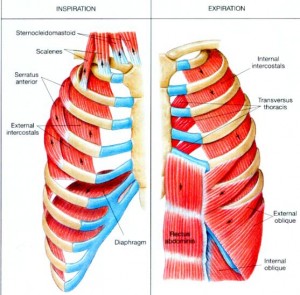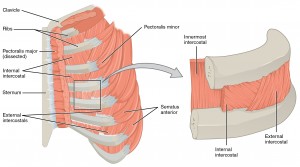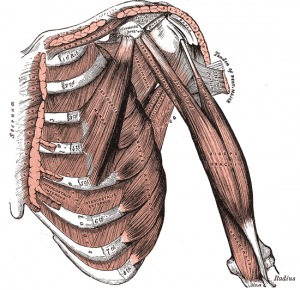Our ribcage exists to protect the heart and lungs. The thoracic spine (T1-T12) is the home base for our ribs and can rotate and flex but cannot extend—again to protect the vital heart and lungs.
Between each rib lie several layers of intercostal muscles that are responsible for expanding and shrinking the rib cage when we breathe.
When the lungs expand to take in breath the ribs need to expand as well. This expansion and contraction is facilitated by the intercostal muscles if they are balanced in tone and well aligned posturally.
If the intercostals are tight they will restrict the lungs access to the breath. If you have read the blog before or have taken my class, you know that I think we all lean backwards and elevate the front of the ribcage too much.
By definition this will make the intercostal muscles at the back of the body too tight while creating an environment in the front of the chest for the intercostal muscles to be too long.
The three layers of intercostal muscle are the external intercostal muscles, internal intercostal muscles, and the innermost intercostal muscles.
The internal intercostals are responsible for forced exhalation depressing the ribs and decreasing the space in the chest cavity. These muscles originate on the second through the 12th ribs, and insert on ribs one to 11.
The external intercostals with origins on ribs one through 11 and insertion from ribs two to 12. These muscles are responsible for forced and quiet inhalation, raising the ribs and expanding the chest cavity.
The third layer, the innermost intercostal muscles are the deepest layer and split into three different groups– the transversus thoracis, the innermost intercostal and subcostal muscles.
***



